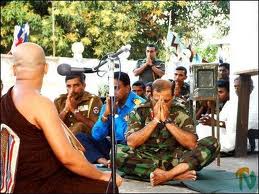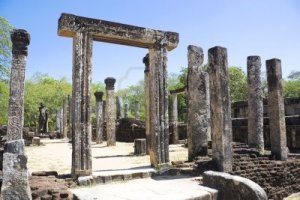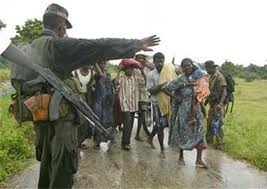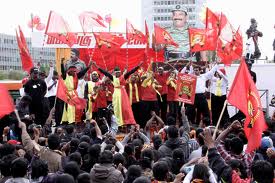 Three quarters of the citizens in Sri Lanka are Sinhalese and Buddhist. When the religion started to disappear in the sub-continent, on the island the devotees decided that they must protect this cultural heritage as the most venerated treasure.
Three quarters of the citizens in Sri Lanka are Sinhalese and Buddhist. When the religion started to disappear in the sub-continent, on the island the devotees decided that they must protect this cultural heritage as the most venerated treasure.
Whilst it is definitely a mission of merit to safeguard cultural values, there is a threshold of common sense. And that is when you start to harm others only because of their diversity. This is the root of violence in Sri Lanka. In fact the Sinhalese majority, or better the elite of the aristocratic families, decided to portray the mere existence of diversity as a threat to their mission. So they developed this narrative of being encircled and surrounded by the other minorities, which is pure fiction.
Muslims, Hindus and Christians are too few to represent a demographic menace for the mainstream religion. And the same applies to languages. Nonetheless, even today it is quite popular the myth of preserving the cultural heritage by any means. That includes the extermination of the other cultural identities on the island.
Essentially the Sinhalese majority,convinced by the leading feudal-families which control the country, developed a syndrome of being besieged. The necessity to protect the soil, to impose a dominance of its own language and religion, became the obsession of being threatened. Of course 30 years of civil war didn’t help. In particular the LTTE cultivated a sense of revenge, that escalated the atrocities committed by both sides. The Sri Lankan state permitted that deranged members of its security forces perpetrated horrendous crimes against the Tamil civilians. They weren’t isolated case of insanity. The long tradition of communal riots driven by personal interests of local chieftains and of the usual families, when the state was openly

A boy in the attire of a demon, goes on a collection drive in Tamil Nadu, India.
Courtesy of Hindustantimes/Perumal Venkatesan
confronted by an organized army, retuned itself with random attacks against Tamil villages. In response to that, the LTTE sent killing missions to slaughter Sinhalese people living within or too close to the Tamil areas. Finally the LTTE attacked the Temple of the Tooth, the most sacred Buddhist place in Sri Lanka. The delirious of being encircled found an uncanny impersonation.
Though the Tamil presence has never challenged the Sinhalese presence in the South, the paranoid conviction of nurturing enemies at home, became reality. The Sri Lankan ideology is obsessed by protection and defence against its own disappearance. And extremely coherent with its Buddhist philosophy, the biggest enemy of the Sri Lankan state, is itself.











